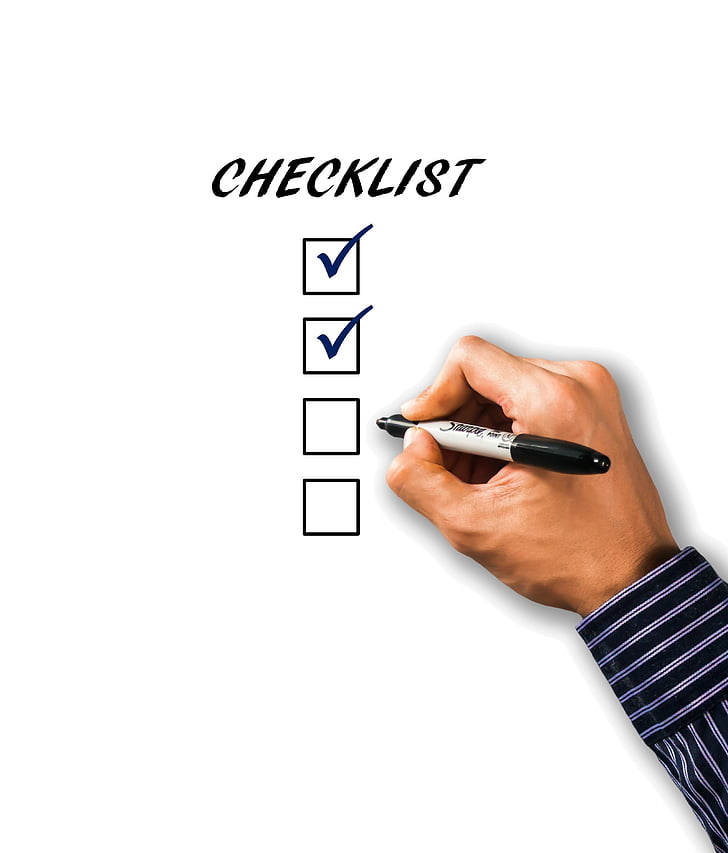
You've built an amazing community on social media. Your followers hang on your every post, story, and video. Now you're ready to build something you truly own: an email list. But there's a catch you probably didn't see coming. Your first emails might go straight to spam folders.
That's where the practice of an email warm-up comes in. It's like stretching before a big workout. Without a proper email warm-up, you risk getting benched by email providers before you even start your email outreach.
You're a pro at building connections. You know how to create content that resonates with your audience. Think of this as learning a new platform with its own set of rules, where the goal is to land in the primary inbox, not the spam folder.
Table Of Contents:
- Why You Can't Just Blast Emails to Your Followers
- What Exactly Are Email Warmups? (And Why They're Your New Best Friend)
- Your Step by Step Guide to Performing Email Warmups
- Using an Email Warmup Tool for Automation
- Keeping Your Email Reputation Strong for the Long Haul
- Frequently Asked Questions
- Conclusion
Why You Can't Just Blast Emails to Your Followers
Imagine you walk into a huge party where you don't know anyone. You wouldn't just jump on a table and start shouting, right? You'd probably start by talking to a few people, have some nice conversations, and slowly build a good vibe.
A new or freshly created email account is exactly like that new person at the party. An email service provider (ESP) like Gmail or Outlook acts as the host. These service providers are very protective of their users' inboxes and watch new email accounts carefully to protect people from spam.
If your new account suddenly starts sending thousands of emails for your first email campaign, it's a huge red flag. The ISPs will assume you're a spammer. Your emails will be sent directly to spam folders, or worse, completely blocked, hurting your future email campaigns before they begin.
What Exactly Are Email Warmups? (And Why They're Your New Best Friend)
An email warmup is the process of getting a new email account ready for action. You start by sending a low volume of emails and then follow a schedule of gradually increasing the number of emails you send over time. This shows ISPs that you're a legitimate sender, not a spammer trying a smash and grab.
This warmup process builds your sender's reputation. Think of it like a credit score for your email domain. A good reputation means your emails get delivered, while a bad one means you're stuck with serious deliverability issues.
A patient approach pays off big time for your influencer brand. Your goal is to gradually improve this reputation from the moment you have a freshly created email. A positive email reputation is foundational to successful email marketing.
Actually Landing in the Inbox
The whole point of this is to improve your email deliverability and inbox placement. That's the technical term for how many of your emails actually make it to the main inbox. Great deliverability is the foundation of any successful email strategy, whether you're sending a warm email to your list or starting a cold email campaign.
When your emails land in the primary inbox, more followers see your content. They see your new merchandise and affiliate links. An email can't be opened if it's never seen, which directly impacts your open rate and the success of your outreach.
Generally speaking, a good sender's reputation is built on positive interactions. Key factors that email service providers look at include how many people open your emails, click on your links, and reply. A high bounce rate or a high number of spam complaints will quickly damage your standing.
| Positive Reputation Signals | Negative Reputation Signals |
|---|---|
| High open rate on emails. | High bounce rate (invalid addresses). |
| Getting replies to your emails. | Emails being marked as spam. |
| Emails being moved from spam to the inbox. | Low engagement (no opens or clicks). |
| Emails being marked as important. | Sending to spam trap addresses. |
| Low number of unsubscribes. | Sudden, high-volume sending. |
Sending More Emails Without Getting Benched
Every email service has daily sending limits. For example, Google Workspace lets you send up to 2,000 emails per day from a single account. But you don't get that limit on day one of a freshly created email account; you have to earn it.
Trying to send your whole list an email right away will likely get your account suspended. The email warmup process slowly proves to the provider that you can be trusted. As you build your positive reputation, your daily sending limit increases, allowing you to grow your email list without hitting a frustrating roadblock.
Getting More Clicks and Engagement
This one is pretty simple. If your emails get delivered, more people will open them. If more people open them, you'll get more clicks and build a stronger connection with your audience. This is your own private channel, completely independent of social media algorithms.
High engagement signals to ISPs that people want your emails. This creates a positive feedback loop that gradually improves your reputation. This, in turn, improves deliverability even more, creating a healthy cycle for your email marketing efforts.
Your Step by Step Guide to Performing Email Warmups
Alright, you're sold on the idea. But how do you actually do it? It might feel technical, but it's simpler than you think with a clear plan. It's about being methodical and patient to properly warm up your email account.
Get Your Tech Right First
Before sending a single warmup email, you need to set up your foundation. You want to look as official and trustworthy as possible. First, you'll want a custom email domain for your brand.
Your brand is everything, and an email like yourname@yourbrand.com looks professional. It builds immediate trust compared to a generic address from a public provider. A custom domain also gives you full control over your email reputation, which is tied to that specific domain.
Next, you must set up email authentication records for your domain. These are called SPF, DKIM, and DMARC. In simple terms, they act like a digital signature, proving to other email systems that you are who you say you are.
- SPF (Sender Policy Framework): This is a list of the servers that are authorized to send email on behalf of your domain. It's like telling the post office which mail carriers are allowed to pick up mail from your house.
- DKIM (DomainKeys Identified Mail): This adds a digital signature to every email you send. When the receiving server gets the email, it can check this signature to confirm that the message hasn't been tampered with in transit.
- DMARC (Domain-based Message Authentication, Reporting, and Conformance): This record tells receiving servers what to do if an email fails the SPF or DKIM checks. You can tell them to quarantine the message or reject it entirely, which protects your brand from being spoofed by spammers.
You might also consider a dedicated IP address. Initially, you'll likely share an IP with other senders. If one of them is a spammer, it can hurt your reputation. A dedicated IP means your sender's reputation is yours and yours alone.
Start Slow and Build Momentum
Now it's time to start sending emails. The key is to start very small. For the first week, aim to send only 10 to 20 warm-up emails per day, then begin gradually increasing that volume each day.
Send these first emails to friends, family, or colleagues you know will open, read, and reply. Every reply is a powerful positive email signal to ISPs. It tells them that real humans are having conversations from your account, which is crucial for building a positive email reputation.
Keeping these conversations going is vital. Ask questions in your warm-up emails to encourage responses. The more back-and-forth engagement you generate, the faster your email account's reputation will strengthen, paving the way for future cold outreach if needed.
Craft Emails People Actually Want to Read
As an influencer, this is your superpower. Your ability to create engaging content translates directly to email. Don't send boring, generic messages; personalize your subject lines to grab attention and make your followers feel special.
Also, watch out for spam trigger words. Words like "Free," "Sale," or "Act now" can alert spam filters, especially from a new account that isn't properly warmed. Keep your language natural and focus on providing value just like you do on your social channels.
Always include a clear unsubscribe link. It might seem counterintuitive, but it's essential. Giving people an easy way out is much better than having them mark your email as spam, which is one of the most damaging actions for your sender's reputation.
Using an Email Warmup Tool for Automation
Let's be real. You're busy creating content and engaging with followers. Manually sending and replying to emails every single day sounds like a chore. The good news is that this warmup process can be almost completely automated.
An email warmup tool, or warmup tool, exists for this exact reason. You connect your new email account to the service's platform. The tool then automatically sends and receives emails from a large network of other real inboxes, mimicking natural human behavior at scale.
The process involves the tool sending out a gradually increasing number of emails on your behalf. These emails are then received by other accounts in the network. The tool then automatically opens your emails, replies to them, and performs other positive actions.
If one of your emails lands in a spam folder, the warmup tool will move it to the inbox and mark it as important. Marking emails as "not spam" is a powerful signal to ISPs. This automated deliverability warmup sends all the right signals, building your email reputation while you focus on what you do best.
Keeping Your Email Reputation Strong for the Long Haul
Getting your email account warmed up is a huge first step. But maintaining a good sender's reputation is an ongoing process. It's like fitness; you can't just go to the gym for a month and expect to stay in shape forever.
One of the best practices is to regularly clean your email list. People change their email addresses, or sometimes you get fake ones from giveaways. Sending to invalid addresses results in a bounce, and too many bounces will damage your reputation.
Using a list verification service can help you remove these bad emails. It keeps your list healthy and your bounce rate low. Good list hygiene is an important part of protecting your reputation and ensuring the success of your email marketing and any future cold email campaign.
Frequently Asked Questions
Here are answers to some frequently asked questions about the email warmup process. Many people have these questions when they first start sending emails.
How long does the email warmup process take?
Generally speaking, a full warmup takes about 8 to 12 weeks. During this time, you will be gradually increasing the number of emails you send each day. Rushing the process can backfire and hurt your sender's reputation, so patience is important.
Can I warm up an old email account?
Yes, you can and should. If you have an existing email account that you haven't used for sending bulk emails or that has had deliverability issues, a warmup is a great idea. It can help repair a damaged reputation or build a positive sending history for an account that has been dormant.
What happens if I stop the warm-up process midway?
If you stop sending emails for an extended period, your sender's reputation can cool down. Email providers prefer consistent, predictable sending behavior. If you take a long break and then suddenly start sending high volumes again, it can look suspicious and trigger spam filters, undoing your hard work.
Is sending cold emails different from regular email campaigns?
Yes, there's a distinction. A regular email campaign is sent to your existing list of subscribers who opted in. Sending cold emails involves contacting people who have not subscribed, which is a common practice in B2B sales and requires an extremely well-warmed-up account and strict adherence to regulations like CAN-SPAM.
Do I need to keep the warmup tool running forever?
Once your account is fully warmed and you are sending regular campaigns with good engagement, you may not need the tool running at full capacity. However, many users keep it running at a low level. Maintaining conversations, even automated ones, helps keep your sender reputation strong, especially during periods when you might not be sending many campaigns.

Conclusion
Building an email list is one of the smartest moves you can make as a social media influencer. It's a direct line to your community that you control completely. But to make it work, you have to play by the rules of the inbox.
Performing a proper email warm-up is not just a technical step; it's the critical first impression you make with every email service provider. By starting slow, building trust, and sending great content, you build a powerful asset for your brand.
It's your ticket to deeper connections, a better open rate, and a more stable, long-term business. This careful approach to your email account's health is the foundation of successful email marketing. It ensures your message is heard by the audience you worked so hard to build.
